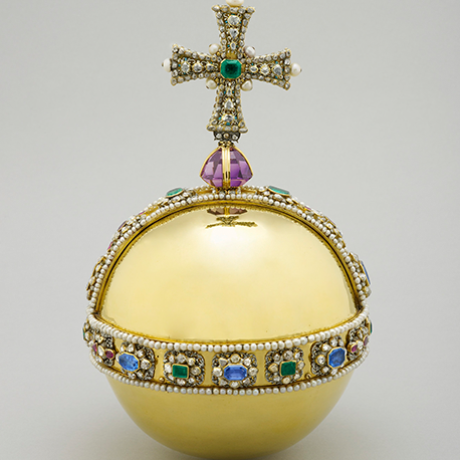
The heart of the Crown Jewels and housed in the Tower of London where they are kept on public display, the Coronation Regalia are sacred and secular objects which symbolise the service and responsibilities of the monarch. The Regalia have played a central role in Coronation Services for hundreds of years and, in keeping with tradition, will be used at Westminster Abbey on the 6 th May. As part of the Royal Collection, the Regalia are held in trust by the Monarch on behalf of the nation.
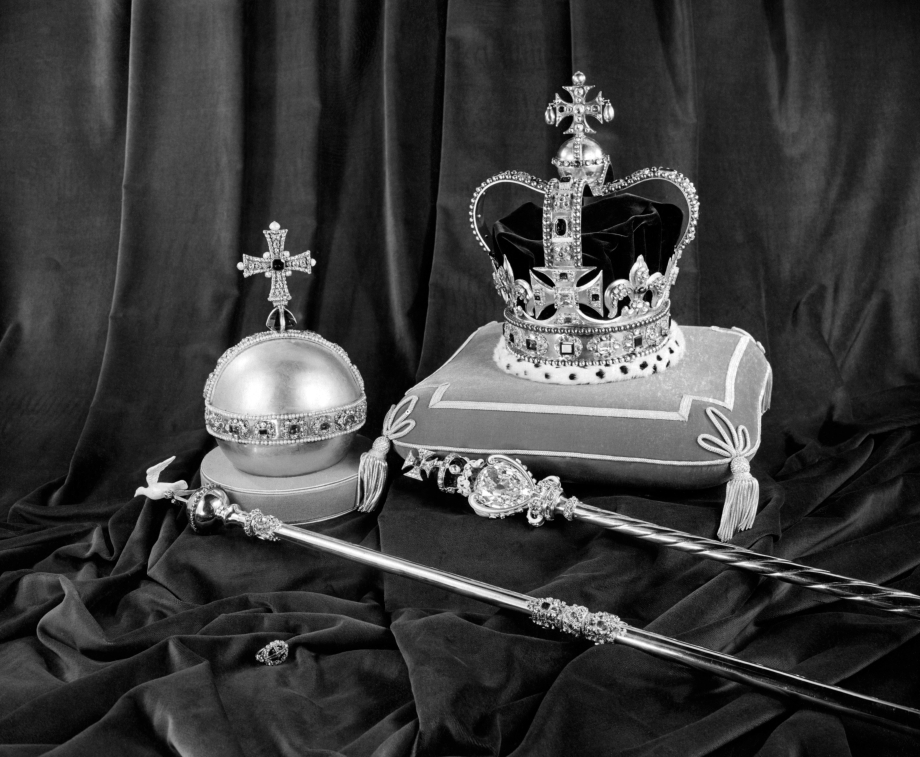
Two Maces, made of silver gilt over oak, date between 1660 and 1695 and are the ceremonial emblems of authority which are carried before the Sovereign at events such as the State Opening of Parliament. Also carried before the Sovereign on formal occasions is the Sword of State, symbolising Royal authority; a steel blade with a silver-gilt hilt, enclosed in a wooden scabbard which is covered in velvet. In 1660 and 1678, during the reign of King Charles II, two such swords were made, the elder of which has not survived. The remaining sword has been used at several Coronations and, in 1969, the Investiture of The Prince of Wales. The sword is carried with the point upwards, and the scabbard carries the coat of arms of King William III.
Three further swords will be used during the Coronation Procession at Westminster Abbey; the Sword of Temporal Justice, signifying the Monarch’s role as Head of the Armed Forces, the Sword of Spiritual Justice, signifying the Monarch as Defender of the Faith, and the Sword of Mercy or Curtana, which has a blunted tip, symbolising the Sovereign’s mercy. The swords were first used at the Coronation of King Charles I in 1626, and the steel blades date back to the sixteenth century, with early seventeenth century gilt-iron hilts, and wire-bound grips. The three swords are carried without their scabbards, with their points up.
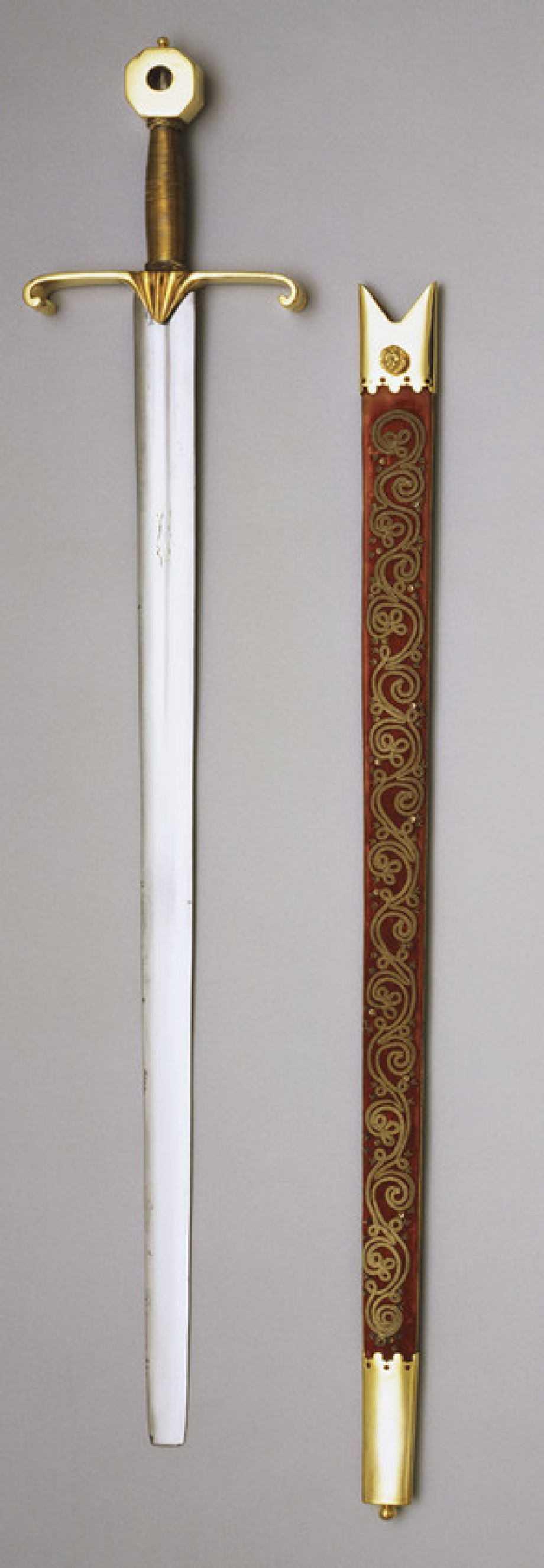
The golden St Edward’s Staff, with its steel spike, was created by the Crown Jeweller, Robert Vyner, in 1661. It derives from an earlier staff which was often referred to as the ‘Long Sceptre’ and carried in fifteenth and sixteenth century Coronation processions as a relic of the Royal saint, Edward the Confessor.
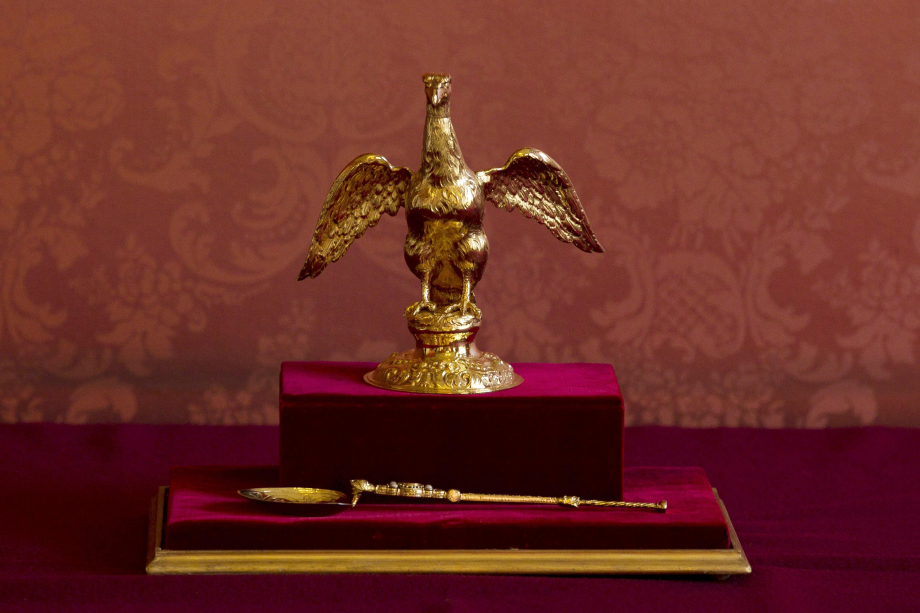
The Chrism oil with which The King and The Queen Consort will be anointed, which was consecrated in The Church of the Holy Sepulchre in Jerusalem in March, will be contained within the Ampulla, made from gold and cast in the form of an eagle with outspread wings. The oil is poured through an aperture in the beak. The Ampulla was supplied for the coronation of King Charles II in 1661 by the Crown Jeweller, Robert Vyner, and is based on an earlier, smaller vessel, which in turn was based on a fourteenth-century legend in which the Virgin Mary appeared to St Thomas à Becket and presented him with a golden eagle and a vial of oil for anointing future Kings of England.
The silver-gilt Coronation Spoon is the oldest object in use at Coronations, having been first recorded in 1349 among St Edward’s Regalia in Westminster Abbey, and is the only piece of Royal goldsmiths’ work to survive from the twelfth century, having possibly been supplied to King Henry II (1133-1189) or King Richard I (1157-1199). It was used to anoint King James I in 1603, and at every subsequent Coronation. In 1649, the Spoon was sold to the Yeoman of King Charles I’s Wardrobe, who returned it for King Charles II’s Coronation in 1661, when small seed pearls were added to the decoration of the handle.
The Spurs were made in 1661 for King Charles II, but the use of spurs at Coronations dates back to King Richard I, the Lionheart, and his Coronation in 1189. The gold, leather and velvet Spurs symbolise knighthood, and they were altered in 1820 for King George IV.
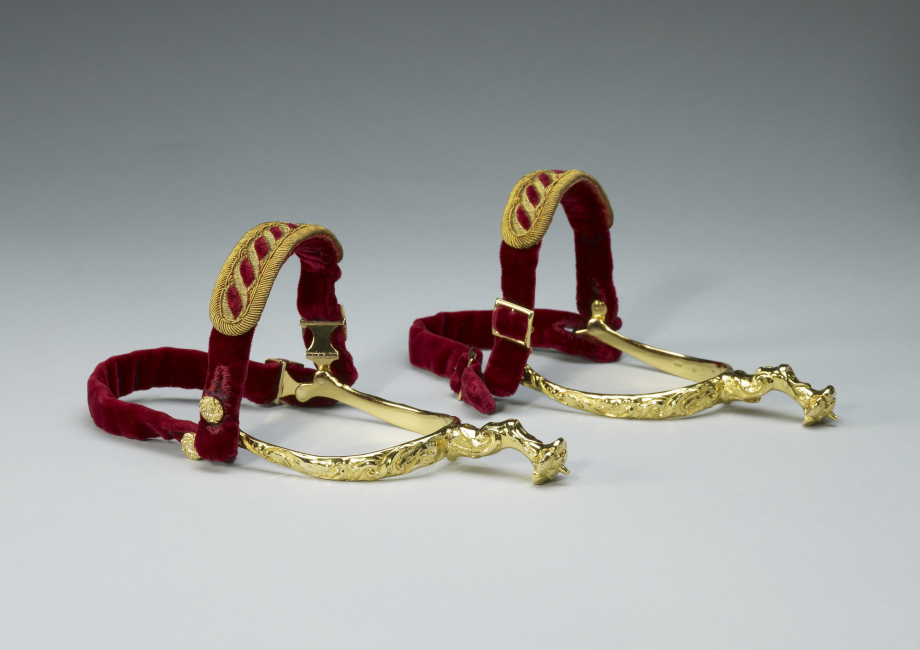
The Sword of Offering was made in 1820, and has a steel blade, mounted in gold and set with jewels, which form a rose, a thistle, a shamrock, oak leaves, acorns, and lion’s heads. The sword is contained in a gold-covered leather scabbard. It was first used at the Coronation of King George IV.
The two Armills are bracelets made from gold, champlevé and basse-taille enamel, lined in velvet, and are thought to relate to ancient symbols of knighthood and military leadership. They have been referred to during previous Coronations as the 'bracelets of sincerity and wisdom'. The Armills date back to 1661 and have been used at every Coronation from King Charles II’s until King George VI’s in 1937.
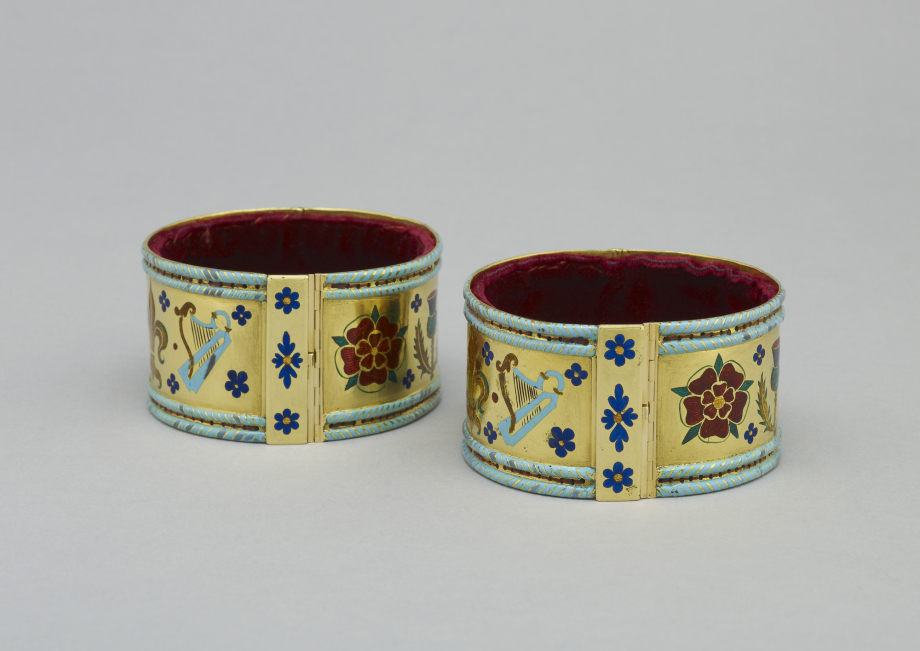
A representation of the Sovereign’s power and symbolising the Christian world, the Sovereign’s Orb was made from gold in the seventeenth century, and is divided into three sections with bands of jewels, for each of the three continents known in medieval period.

The Sovereign’s Ring is composed of a sapphire with a ruby cross set in diamonds. A symbol of kingly dignity, the ring was made for the Coronation of King William IV in 1831, and all Sovereigns from King Edward VII onwards have used it at their Coronations.
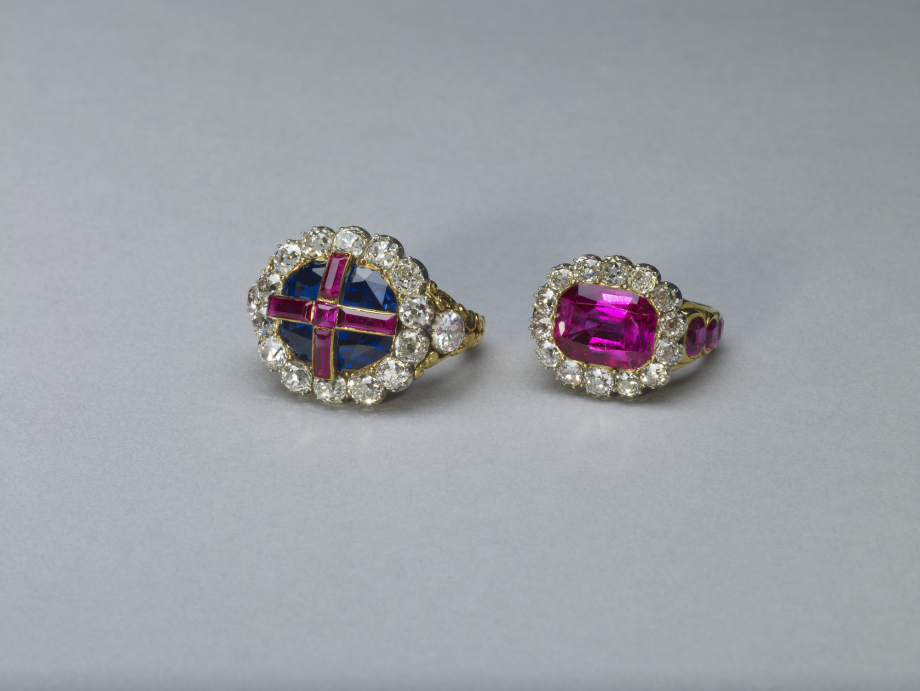
The two Sovereign’s Sceptres will be used at Coronation. The Sovereign’s Sceptre with Cross represents the sovereign's temporal power and is associated with good governance. It comprises a gold rod, surmounted by an enamelled heart-shaped structure which holds the Cullinan I diamond. The sceptre was created for King Charles II, and the Cullinan I was added in 1901. The Sovereign’s Sceptre with Dove, traditionally known as ‘the Rod of Equity and Mercy', represents the Sovereign’s spiritual role, with the enamelled dove with outspread wings representing the Holy Ghost. It was created by the Crown Jeweller, Robert Vyner in 1661.
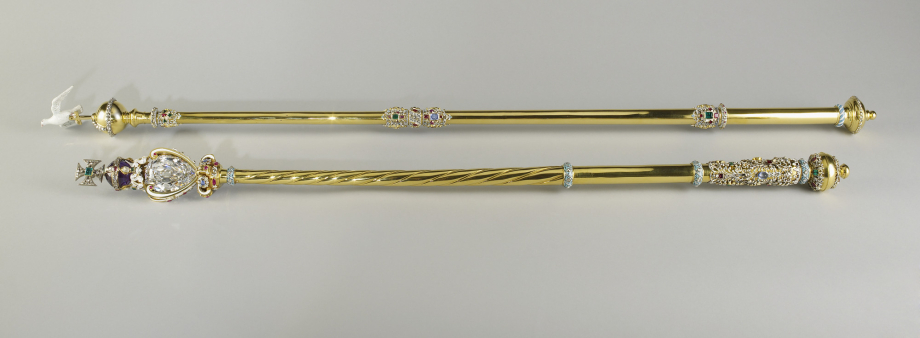
As previously announced, St Edward’s Crown will be used to crown His Majesty The King at Westminster Abbey on 6th May, according to tradition. The crown was made for King Charles II in 1661, as a replacement for the medieval crown which had been melted down in 1649. The original was thought to date back to the eleventh-century royal saint, Edward the Confessor – the last AngloSaxon king of England. The crown was commissioned from the Crown Jeweller, Robert Vyner, in 1661. Although it is not an exact replica of the medieval design, it follows the original in having four crosses-pattée and four fleurs-de-lis, and two arches. The crown is topped with an orb and a cross, symbolising the Christian world, and is made up of a solid gold frame set with rubies, amethysts, sapphires, garnet, topazes and tourmalines. The crown has a velvet cap with an ermine band. St Edward’s Crown was worn by Queen Elizabeth II at the Coronation in 1953. The crown has been removed from the Tower of London to allow for modification work ahead of the Coronation.
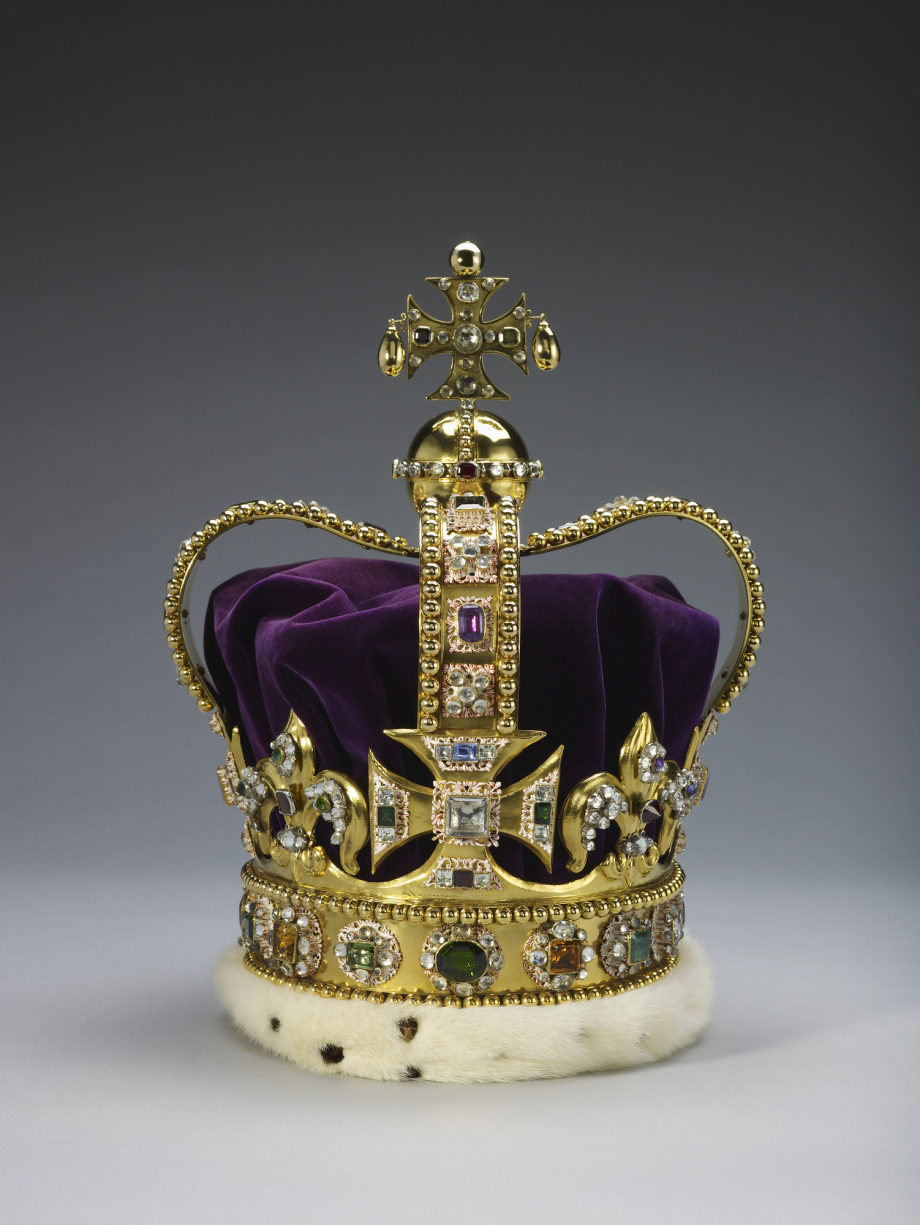
The Queen Consort’s Ring, a ruby in a gold setting, was made for the Coronation of King William IV and Queen Adelaide in 1831, and has been used by three further Queens Consort; Queen Alexandra, Queen Mary, and Queen Elizabeth The Queen Mother.
Mirroring the Sovereign’s Sceptre with Dove, the Queen Consort’s Rod with Dove is symbolic of ‘equity and mercy’ and the dove, with its folded wings, is symbolic of the Holy Ghost. The Queen Consort’s Sceptre with Cross was originally supplied for the coronation of Mary of Modena, Queen Consort of James II, in 1685 by Robert Vyner, and is inlaid with rock crystals.
Queen Mary’s Crown has been chosen by The Queen Consort for the Coronation, as previously announced, marking the first instance in modern times of an existing crown being used for the Coronation of the Consort. Ahead of the Coronation, minor changes and additions to Queen Mary’s Crown are being undertaken, such as the as inclusion of the Cullinan III, IV and V diamonds which were part of Queen Elizabeth II’s personal jewellery collection for many years. The design was inspired by Queen Alexandra’s Crown of 1902. Like Queen Alexandra’s Crown, it can be worn without the arches in the form of a circlet, which Queen Mary wore for the Coronation of her son, King George VI, in 1937.
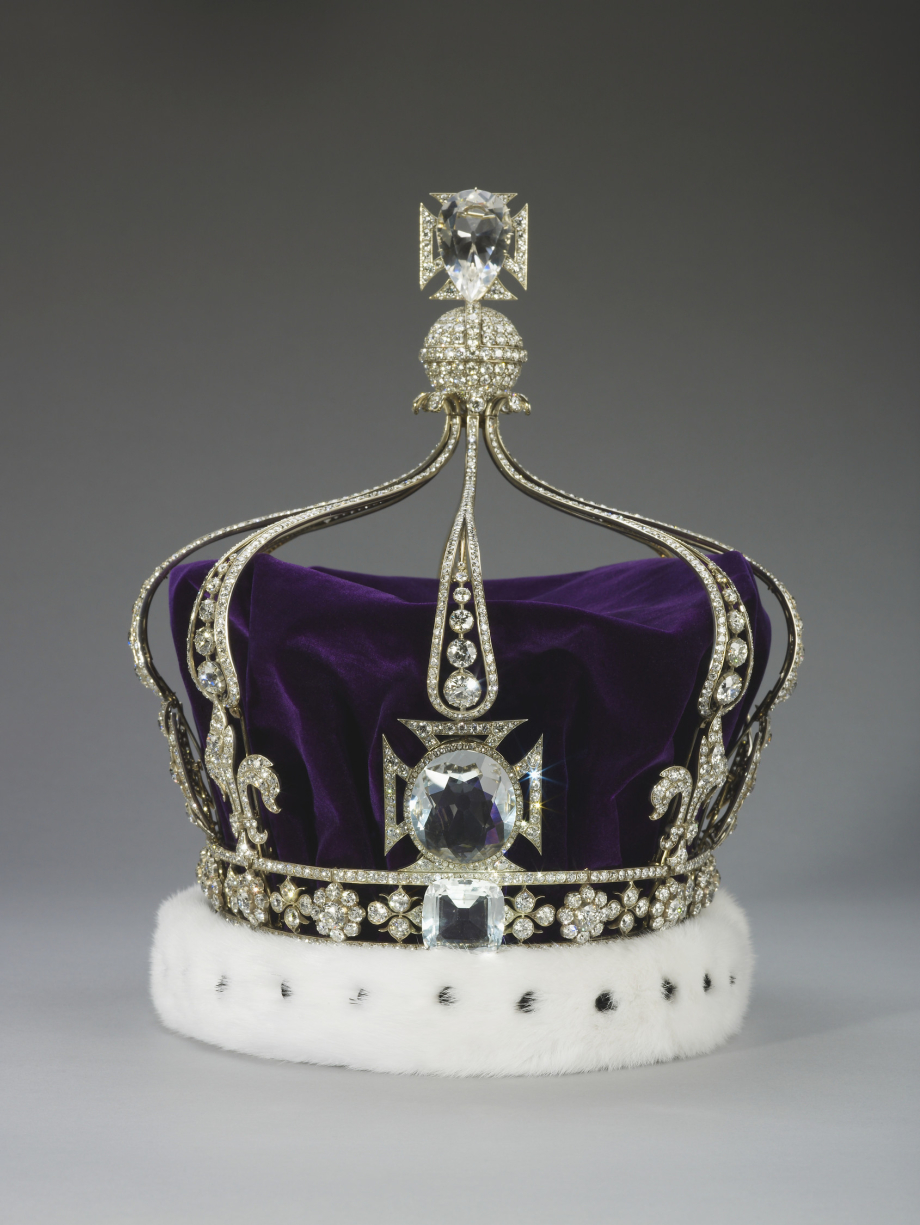
The Imperial State Crown, or Crown of State, is the crown the monarch exchanges for St Edward's Crown at the end of the Coronation Service. The Imperial State Crown is also used on ceremonial occasions, such as the State Opening of Parliament. The term “imperial state crown” dates back to the fifteenth century when English monarchs chose a crown design closed by arches to demonstrate that England was not subject to any other earthly power. This Imperial State Crown was made for the Coronation of King George VI in 1937, but is closely based on a crown designed for Queen Victoria in 1838 by the Crown Jewellers of the time, Rundell, Bridge & Rundell.
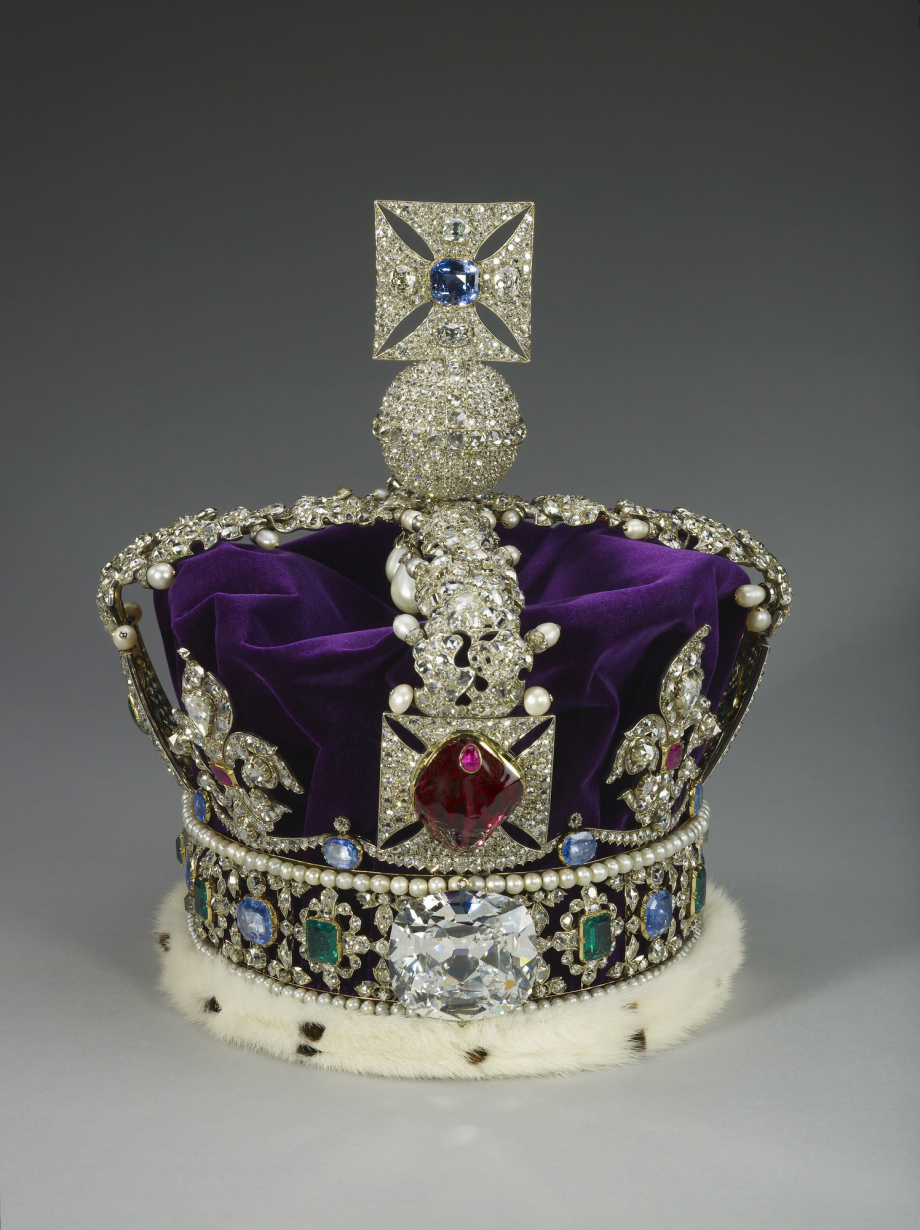
Content and photos courtesy of Royal.uk.

